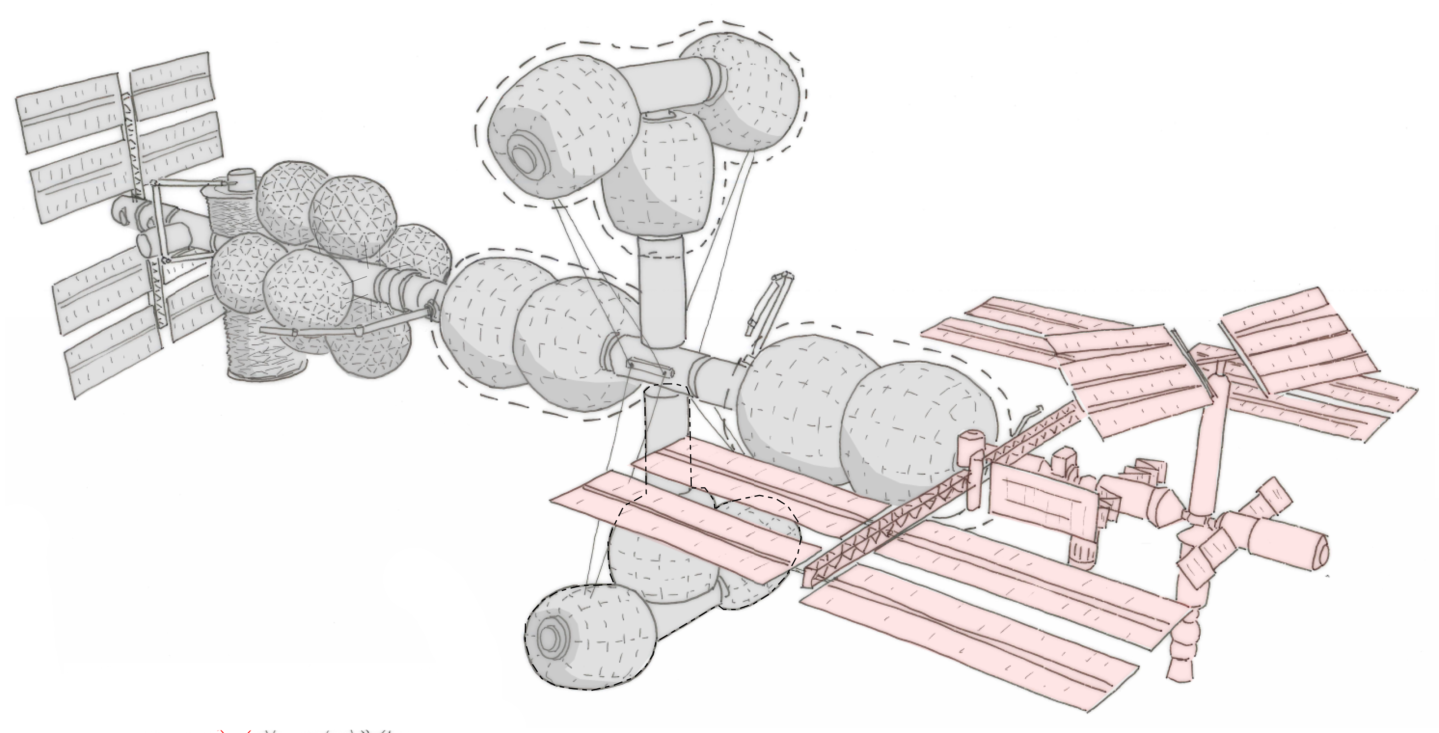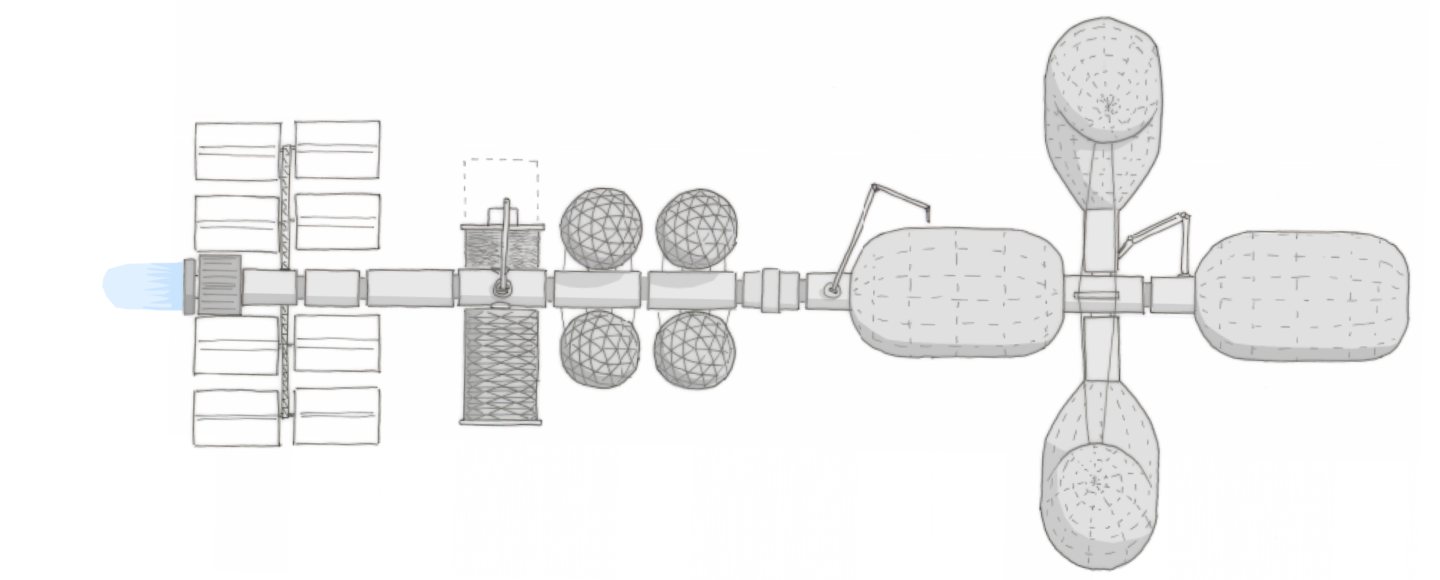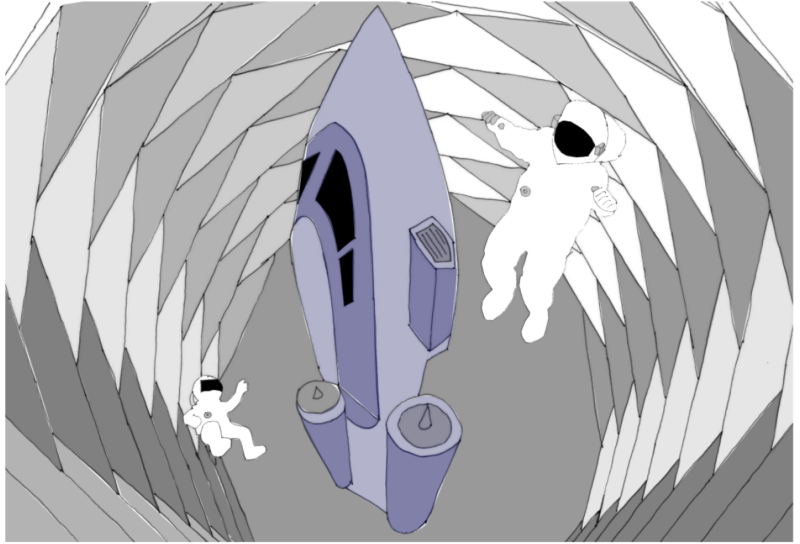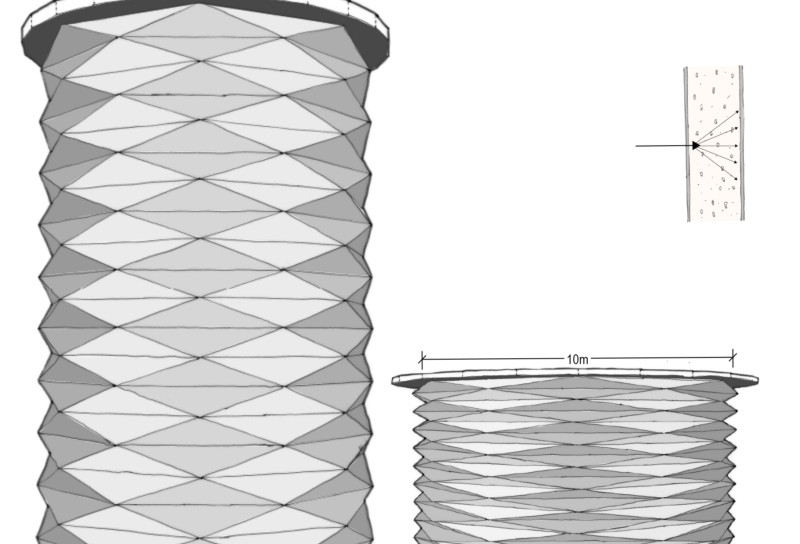The I.S.S. ARKTOS – Latest


The I.S.S. ARKTOS
This year two of our young engineers decided to imagine what it would be like to let slip the shackles of gravity and find liberation in the form of space travel…
Although our highly imaginative engineers like to come up with creative ideas at work, this particular thought experiment was part of the Young Structural Engineers’ International Design Competition. The brief was to design a space station that would be self-sufficient for extended periods of time and travel to mars and beyond, supporting a crew of between 10 and 20. In response, Henry Stone and Theo Williamson grabbed their telescopes and ran outside seeking inspiration.

The I.S.S. ARKTOS was launched...
…in their heads anyway. They took the given brief and started designing the I.S.S. ARKTOS. The design they came up with would support the life of 10 permanent astronauts, with enough room to warmly greet additional crew. The design and layout also offers a high standard of comfort not normally found in the current suite of space exploration vehicles. It features a number of inflatable modules which would be assembled in low-earth orbit, and then docked to the existing international space station.
Being conscientious engineers, the intense radiation that the astronauts would experience outside of low earth orbit was a concern. Unlike the films, space radiation doesn’t turn you into a super hero, it has a slightly more detrimental effect. To remedy this, they proposed to mine and retrieve lunar regolith (lunar soil basically) robotically. This would be placed in sandbag like pouches around the inflatable modules, and thus keeping the astronauts free from radiation poisoning.
Acceleration
The forces put on any structure from over excessive acceleration can be extremely damaging. To counter-act this, all accelerations would be kept to a minimum; this will minimise the forces on the structure and allow Arktos to be as light as possible. Once the desired velocity is achieved to reach a chosen trajectory, the space station will only be required to resist the thrust force applied to balance the loss in velocity due to friction.
After looking at many rockets, the main engine proposed is an ion engine, which uses Argon gas as its propellant, accelerated by a powerful electric field.

Inflatable modules
For the main inhabited areas, inflatable modules are utilised extensively, to maximise the amount of habitable volume which can be put into orbit per rocket, as well as being very lightweight.
The modules expand to over four times the volume of the cylinder alone, providing both ample headroom and open space.
The space between baffles which form the outer structure of the inflatable modules are filled with resin foam after inflation, which provides the inflatable skin with out of plane stiffness. This stiffness is required to support the lunar regolith (moon dirt) sandbags.
The modules are generally formed of an Aluminium honeycomb, with services and plant fixed installed prior to launch to minimise the work to be completed in orbit. The individual modules are launched in multiple falcon heavy rockets. The heaviest forces experienced by these modules will be during launch, where the vibration and acceleration will be considerable; the honeycomb structure is designed to resist these forces. Once in space, the honeycomb structure will then need to resist further advances, mainly those of a pressure differential between the internal and external environments, fended off using hoop stress, as well as providing a stiff “backbone” which runs the length of the ship.

Life support
Keeping the crew alive for the duration is obviously a vital point to consider, and one that there isn’t a great deal of flexibility on. An extremely technical challenge and one that was overcome with a closed loop approach to the ship systems. This includes large hydroponics bays, where food can be grown, and human waste can be recycled as fertilizer and clean water and oxygen will be produced by water electrolysis.
The fore section of the ship rotates, to provide up to 1g of acceleration in the habitation arms and up to 0.25g in the hydroponics bays, to provide some gravity to assist with drainage and water management, which can be difficult in 0g, and one would imagine would also require a number of ‘clean-up operations’.
Rotation
The aft section of the ship does not rotate, which allows for the docking of support craft and landers, as well as reducing the structural requirements on the large tanks which contain water, fuel and oxygen.
The difference in rotation is achieved by a rotating couple module. The fore section slots inside the aft section and is held in place in six degrees of freedom by a “shell” which envelopes the rotating section. This “shell”, made from a thick aluminium honeycomb structure designed to provide continuity between the aft and fore sections.
It will resist any lateral forces from the fore section created by eccentricity of loading, either caused by the rotation of the inhabited modules or the main thrust from the engine. A tension ring of high strength steel is used on the free end of the “shell” is used to activate the entire structure to resist the lateral forces. The rotation is achieved by a series of ball bearings in a bespoke steel frame. The balls are free to rotate, allowing the two halves of the module to act independently. The friction of the connection is kept to a minimum using a diamond-like carbon film. The connection sits between two air locks so the connection itself does not need to be airtight.

Origami
As the landing craft carry out their expeditions to and from The Ark to their destinations, it is likely that wear and tear along with malfunctions will occur to the craft. Routine maintenance will therefore be critical to ensuring that the ongoing operations of the mission run smoothly. Due to the substantial risks involved with spacewalks outside of the space station, hangers that enclose the landing craft whilst docked to the Ark were felt to be an essential addition.
The hanger design takes inspiration from Japanese Origami. Taking the final form of a cylinder, the hanger shell is composed of an aluminium frame with hinges at the nodes. The frame compresses and extends, similar to that of the bellows on an accordion. Hydraulic jacks situated on the inside of the hanger shell allow the hanger to extend and contract when needed.
This frame is surrounded by two layers of Kevlar fabric, with the remaining gaps in between comprised of a foam infill. The Kevlar foam combination will provide shelter from space debris, the Kevlar layers taking the majority of the impact loading and the foam distributing the force of the impact.
The advantages of having a deployable structure as opposed to a fixed and regimented hanger include ease of docking and construction. The significant reduction in weight and deployable nature of the hangar compared to a conventional design allows it to fit within the rockets that will deliver the components to space. This will not only reduce construction time and cost during the initial stages but also provide an appropriate structure suited to the purpose.
The hangar door is formed by a “fabric iris”, allowing the door and mechanism to fit within the end of the hanger without the need for a large, cumbersome hinge mechanism. Unlike conventional irises designs with a number of mechanical components which slide together, the door is composed entirely of a tube of elastic fabric with two discs either end. Rotating the discs in opposite directions closes the aperture. This mechanism will need less maintenance than a conventional iris.
Space bladder
The bulk storage tanks take the form of geodesic domes made out of carbon fibre tubes and nodes with an inner bladder and are intended for long term storage; smaller tanks within the habitation modules will supply astronauts with oxygen/water. The bladder is a Kevlar fabric which is inflated when filled with reserve hydrogen fuel or water. An inflation structure was chosen to minimise the chance of damage to the tank from space debris as the fabric will be deflated when empty and minimise weight.
The water and fuel are outside the thermal line and allowed to freeze to minimise any dynamic forces on the frame from the stored liquid moving, but can be melted later, to reclaim the liquid. Cables are used to help the Kevlar fabric inflate as well as pre-stressing the carbon fibre tubes in the dome. The compression applied to the dome helps to keep the structure in place and allows for easy assembly as no positive connections are required. Fuel and water can be moved between storage tanks to counteract changes to the space stations centre of mass from docking spacecraft in the hanger.
Henry and Theo were highly commended by the institute of structural engineers for their design of The I.S.S. Arktos. The launch date is yet to be confirmed.


Registration no. REG-087